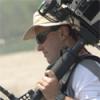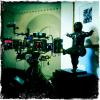-
Posts
378 -
Joined
-
Last visited
-
Days Won
10
Posts posted by Brant S. Fagan SOC
-
-
-
Vote for Pedro, flan, and that new Vest is $4,250. Just my guess.
-
I do have some vintage Model II flan available now! Bargain pricing, too! Will part out.
-
Give me a shout as all three of mine are hanging out in the Steadicam "lounge" here in NH.
-
Pedro T-shirts will be priced accordingly at US$4,000. Call Ron to order now!
-
Through the years I have tried some of the Lemo "generic equivalents" and I can say that they are NOT the same. What is it worth to you to run the risk that at some unforeseen "opportunity," the slightly less expensive power cable or start/stop cable fails right in the middle of something that is not repeatable? For my money, zero-failure connections are the goal, not saving ten or twenty bucks on connectors. The embarrassment factor alone should be enough to shame you into making smart purchases when it comes to system reliability and performance! Spend the money! The peace of mind is priceless!!
-
I've got the Blackmagic model and it's great. Not as inexpensive as the Kramer but it is a 1 in by 6 out unit. Since that purchase last Fall, I have added another coax cable running the post and use that for Alexa/Codex setups to feed my Boxx TX unit upstairs.
-
The Omnishot fits both Preston hand units since the battery mounting interface is the same.
-
There is no fan in either the Boxx Meridian TX or RX.
-
I have always run the Alexa as a 12 vdc camera, even with the Codex recorder slung on the rear battery plate. This gives me "shore power" off a block slung on my stand and hot swap with the 24 vdc 2-pin Fischer connector when docked. The Alexa is a 12 volt nominal camera and uses the 24 volt supply simply to run the 24 volt accessories. The internal board determines what power source provides the best electrical potential and draws from that source.
-
Let's see what Paul Dudeck at Anton/Bauer has to comment on this development. Of all people on this Forum, he will have accurate and complete information.
-
Well, a neighbor compared what I (we) do to the job description of a plumber: Do it right and most won't notice, but screw it up and you're covered with $h_t!
I agree with the humility aspect! One little step, one little tilt or pan, and it's just not right. I think we can always do better but it's the journey that makes whole.
-
Sadly, there is no simple way to have this work without some help from a voltage regulator. If you are using an onboard battery, that will tie up the A/B or V-Lock plate and force you to supply 24 volts to the 2-pin Fischer connector. Once you do that, the Alexa will draw power from that until the low voltage cutoff level is reached. Upon hitting that threshold, the Alexa will draw from the onboard battery plate source. This would be simple if there was a separate 12 volt connector on the body which then would allow what you are attempting.
-
My choices for cold weather operating are a range of options depending on the type of shot, temperature, and other weather factors. For my post hand, my thinnest is a pair of nomex pilot's gloves in black. Next thicker choice is a pair of Mountain Hardwear windproof fleece gloves. Still thicker are the North Face Windstopper fleece gloves. For the arm hand, I choose the thickest glove I carry for most of the work since there is less dexterity required to function. Usually, this is a pair of Marmot Work Gloves which are still made today primarily for alpine sports at elevation. Love those gloves!! When not operating, I take my gimbal hand (left) and place it inside a pocket of my outer layer containing either hand warmers or another set of thick gloves and only slim down to the thin layer glove when they roll sound. Those thin nomex gloves don't really keep the cold from transferring from the cold metal to my hand but they do cut the wind and help with the recovery and reheating of the hand once the shot is completed.
To really make things more palatable, I recommend getting the electricians to setup an open face light on a stand placed directly adjacent to the Steadicam stand and focused to build heat on the gimbal control surfaces. Works like a charm and does really help you get through the day despite the weather conditions.
-
I'm interested. Drop a line to me through brant at brantsfagan <dot> com. Photos and history appreciated. Thanks!
-
-
Dan--
If you followed all reasonable courses of action and came up empty, you are on the clock at call and they are at fault. Period. Most email-only call sheets I have worked from ask for a reply to confirm receipt either by text, email or phone. A 'no reply' from you should have prompted a call to reconnect.
Have a great day!
-
In New York, we ask for and receive an additional rental fee for our Boxx Meridian wireless HD systems since these are additional equipment. Production managers will listen when you tell them about the capabilities and performance of the US$15,000 system. I have found it most effective to explain how stable and clean the wireless image is for the folks in the village.
On a recent national commercial, the PM said that they had been shooting in other cities and the director "just looked at the Steadicam monitor" or "watched playback." Well five minutes into the day, the director asked for his "wireless monitor" and the PM had to "have a chat" with me about solving the problem. "No problem" I said and pulled out my system. "This contents of this case cost $XXX per day" I told her and she ponied up the cash.
A system with this kind of power and initial cost is clearly not something to "be included" since this is quite a bit more than a Modulus.
Try it. It works. Perhaps when the systems come way, way down in price they might be affordable enough to "be included," but currently, that is not appropriate.
-
Yes, I was one of the first five owners of the new version of the Boland 8.4HD DayBright monitor and I can say it is awesome in every respect! Used it on three features two episodics and several commercials since taking delivery back in April.
Great off-axis viewing, sharper image, lower power consumption, and no cooling fans due to the new LED backlight system.
Contact Gary Litwin who is a member of this Forum for more details.
-
Adam--One thing to check would be all screws and fasteners on your topstage. Make sure they are tight and secured. Also, at some point, when you have a S L O W day, take your gimbal off, break it down and clean your bearing. Great thing to do on a "rainy day."
Same thing goes for your arm. Clean and inspect all components.
-
Gents--I have one of Jerry's programs from WAY back when Mac OS7.5 was still the hot twinkie! Looking for something new and portable. Like for the iP4. That's why I suggested it. No offense to other platforms.
-
Why not make it an iP4 app as well? Many use that platform here. Just .02
-
Wait one. There's a difference between undercutting and not asking the going rate.
Yes, I clearly remember starting out with old gear, no experience, and no contacts. I also remember a Workshop Instructor clearly reminding us to ask what we are worth otherwise we diminish our own selfworth.
Take each opportunity to gain more experience and grow your rate to match. I feel it's appropriate to ask for a higher rate while knowing you can 'settle' for less. You get more and the client got something back. Sure, negotiating is hard work, but so is the job of a Steadicam operator.
-
Try not getting caught up in the "sound" of the responses you get here, but rather try to learn from the substance of the messages. Please don't take it personally if folks on here are tired of being undercut. Many people have fought long and hard-won battles to establish and maintain a rate structure that is comensurate with the skills, experience and equipment that we as Steadicam Operators bring to each job. You have to pick and choose your battles as you learn and grow as an operator but keep the goals in sight and in sharp focus as you make deals and hone your craft. There is an art to the deal and a separate yet still connected art of the art: remember that this is a career, not a hobby or charity.








Rickshaw
in Vehicles and Mounts
Posted
If you decide to build your own, just remember what can happen when you hang that much weight off the front! Keep in mind that to perform well, the machine must be able to adapt to different demands on it's performance based on shot design and location issues.
Don't let your director ride, as Ron suggests, instead make him/her push you around and you can impress them even more by providing a monitor for them to watch while they work out during the shots! Keep in mind how you will need to break it down to transport and ship it as well.